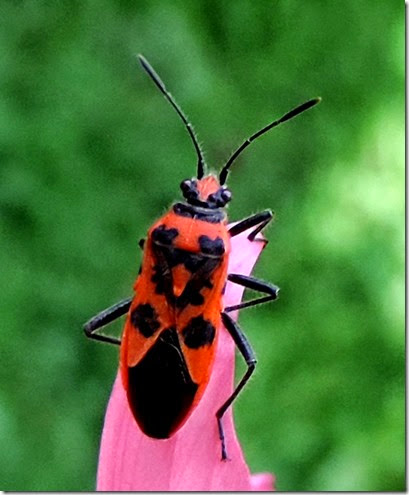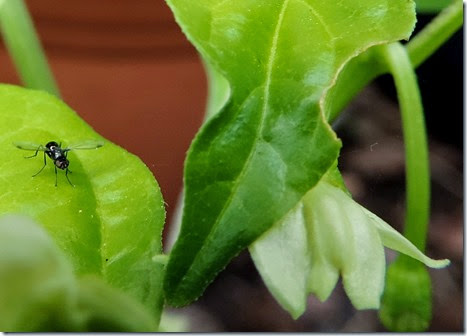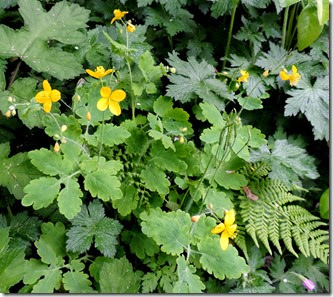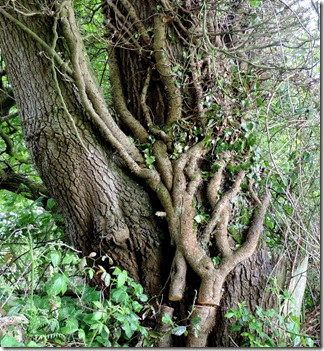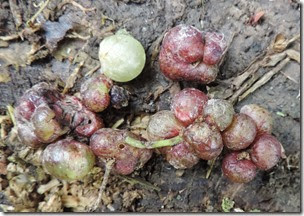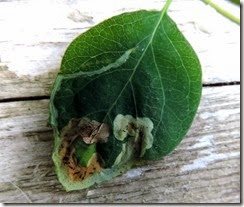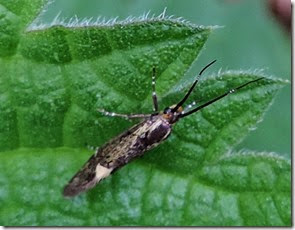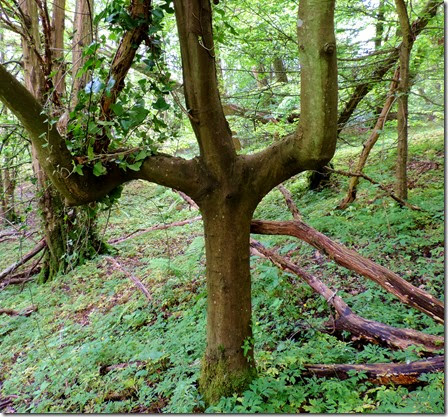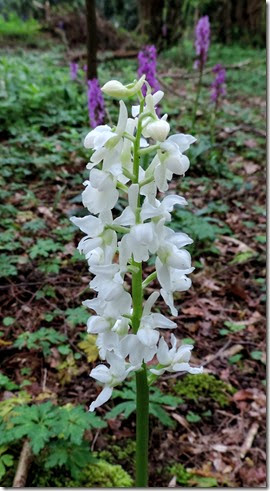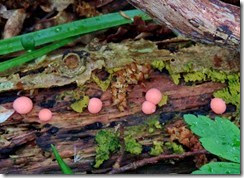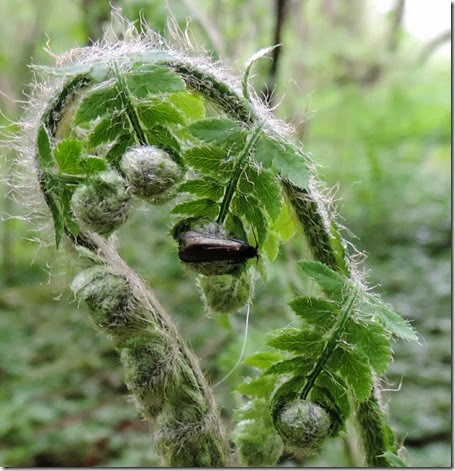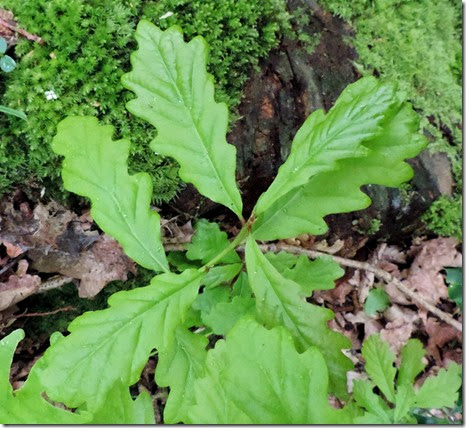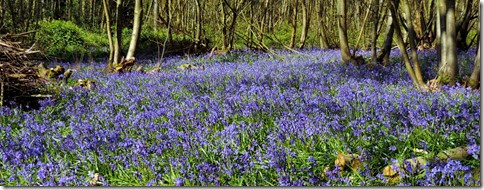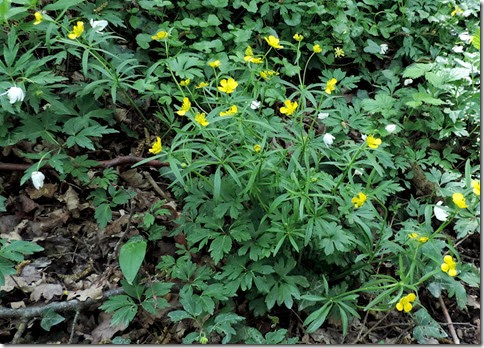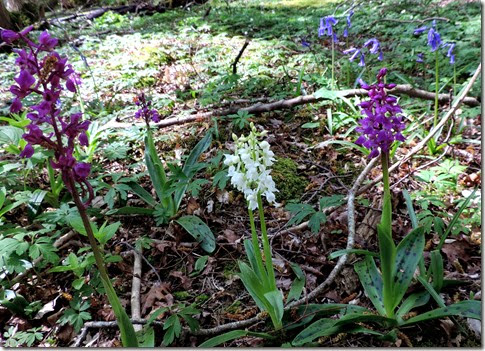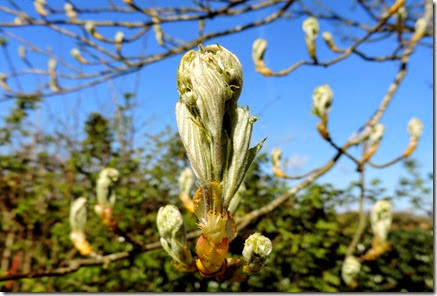The brightly coloured plant bug Corizus hyoscyami (Hemiptera: Miridae) seems to be reasonably frequent in our area. Yesterday I found this one sitting on a Schizostylis (or, more properly Hesperantha) flower in our garden in Sedlescombe, East Sussex.
As an ecologist and biodiversity researcher and recorder, the author visits a wide range of rural and urban habitats mainly close to his home in Sedlescombe near Hastings, East Sussex, UK. The weblog covers the full spectrum of wildlife, from mammals to microbes. As well as details of encounters with England’s flora and fauna, information on where to see species of interest is often given.
Monday, September 01, 2014
Thursday, August 21, 2014
Chilli fly
I have been looking after a chilli plant for one of my granddaughters and, having persuaded it to come into bloom, I have noticed that some of the flowers are dropping off.
I learnt from a chilli-growing web site that this might be due to the absence of pollination by insects or the wind so, if the weather is good enough I will put it out in a sheltered place in the fresh air.
Today there were two insects running about on the leaves, though not visiting flowers. One was a very small, black hoverfly, the other a shining black sepsid fly frantically waving its wings as sepsids do.
Tuesday, May 13, 2014
Some May pictures
There are several plants of greater celandine or swallow-wort (Chelidonium majus) in the garden. They were brought in originally by our granddaughter but seem to have naturalised as they have in many other places in the British Isles.
The plant is actually a member of the poppy family and not related to the lesser celandine (Ranunculus ficaria). The greater celandine has a prodigious medicinal reputation and a huge array of toxic chemicals in its orange sap.
According to Wiki, for example, it was used in Ukraine as the basis of an anti-cancer drug called "Ukrain". This was created in 1978 by the Ukrainian chemist Vasyl Novytskyi and manufactured in Austria. Although the drug was never approved by any regulators, Novytskyi “claimed it to be a complete cure for all cancers, radiation-induced diseases and AIDS and [he]was arrested in Vienna for aggravated fraud on September 4, 2012.”
On the path to the village there is an old and battered oak tree festooned in ivy. If you look carefully at the picture you will seen that someone has sawn through the ivy trunks, an event, in my view, of environmental vandalism. I think the ivy would have been very unlikely to kill the oak and would have produced quantities of nectar and pollen in late summer and early autumn for the benefit of many invertebrates. The dense foliage would also have provided much shelter for birds, bats and other creatures while the berries would have been a spring feast for woodpigeons.
After the recent high winds, the ground under oak trees has been littered with currant galls, the agamic stage of the gall wasp Andricus quercusbaccarum, usually found on oak catkins but also on young leaves. ‘Agamic’ means this stage is female only and the resultant wasps will lay their eggs on the fully expanded oak leaves and create the spangle galls which will produce both sexes next spring.
Friday, May 09, 2014
A spring leaf-miner & saproxylic moth
I found a leaf mine on a leaf of snowberry (Symphoricarpos) growing in the hedge at Balcombe Green that separates the lane from Red Barn Field.
It was made by the larva of an Agromyzid fly, Aulagromyza cornigera, and the grub has already fed up and left the mine. It addition to its shape, identification is made easier by the fact that its larval stages are spent in April and early May.
I also found an Oecophorid micromoth, the sulphur-underwinged tubic, Esperia sulphurella on a nettle leaf. This is a widespread species and, I think, the name ‘tubic’, comes from the fact that the larvae, which feed on dead wood, conceal themselves in an under bark tube of spun silk.
Friday, May 02, 2014
How did this happen?
Wandering through a local wood I came across this sycamore tree and have been speculating ever since as to how the branches achieved this cruciform shape.
My best idea is that a normally shaped tree was half crushed under the weight of another blown down by wind (perhaps in the 1987 storm that did considerable damage to this wood) and managed to hold the branches in this espaliered shape for long enough for them to become a permanent feature. It is too far from any boundary to be a result of deliberate pleaching into a hedge.
Sunday, April 27, 2014
More spring in Killingan Wood
The early purple orchids (Orchis mascula) are now at their best and I thought it was worth posting another picture of one of the white-flowered examples.
Along the bank where the old beech trees grow there are quite a few beech seedlings indicating that last year was a good mast year with plenty of viable seed being produced and not too much of it taken by seed predators. It remains to be seen how many of these seedlings will survive into adulthood.
There seems to be a growing number of slime moulds about too. The yellow example is one about to change from a plasmodium to a spore bearing example, while the orange balls are the spore-bearing bodies of one of the Lycogala species – difficult to determine to species level. They have some interesting vernacular names: wolf’s milk, toothpaste slime and groening’s slime. ‘Groening’ is spelt both with a capital and a lower case ‘g’ so it is not clear whether it refers to something or someone, though bird-catchers have been known as ‘groenings’ in America, so maybe the slime mould is thought to resemble birdlime.
Friday, April 25, 2014
Crozier cradle
In Killigan Wood today I found this male Reaumur's longhorn moth, Adela reaumurella, cradled in the uncurling top of a soft shield-fern frond. If you look carefully you can see a long antenna like a white thread running down from the head of the moth. I also found several more plants of this fern in the wood, though it is not as common as the other ferns. It is easy to pick out at this time of year as the frond tips bend outwards and the pinnae unroll from neat silver balls.
At the entrance to the wood I noticed a spray of oak leaves that appear to belong to the ‘other’ British species, Quercus petraea, the sessile or durmast oak (no lobes at the base of the leaves, stellate hairs on the underside, five lobes etc.). The word ‘durmast’ is often spelt with a capital, but it does not appear to derive from a place-name. The Oxford English Dictionary suggests it might have derived from a misspelling of ‘dun mast’.
Thursday, April 17, 2014
Purple, blue, white and yellow
Spring is now advancing at full speed and the woods are at their wonderful best.
In Killigan Wood about quarter of a mile from our house, in addition to the usual astonishing spectacle of the bluebells, there were many early purple orchids (Orchis mascula) with several white-flowered examples among the purple, and more plants of goldilocks buttercup (Ranunculus auricomus) than I have seen for many years.
Thursday, April 10, 2014
Service recommences
The wild service or chequer tree (Sorbus torminalis) in the lane outside has quite suddenly started into leaf.
There is a fat flower bud within the layer of silver leaves and so it looks like we shall have a great crop of fruit this year.
This phase of the tree is very brief. The flower will soon be open and the leaves turned to the sad green (as one author described them). If you are interested in this scarce British native species, now is the time to look for it in hedges and woods before it becomes almost invisible again.
